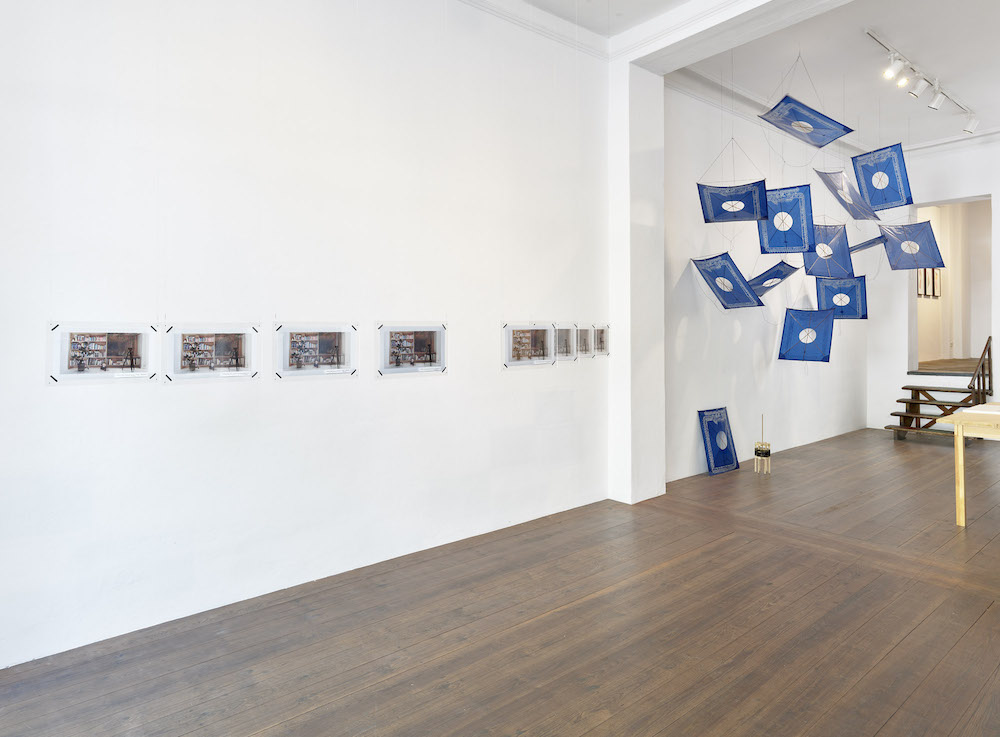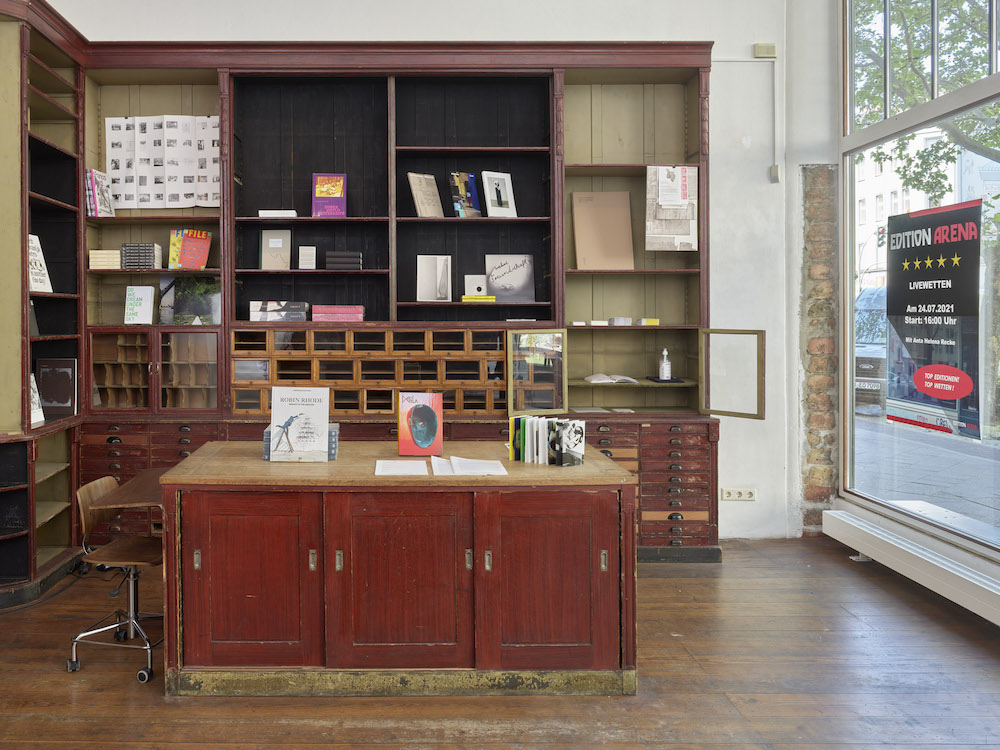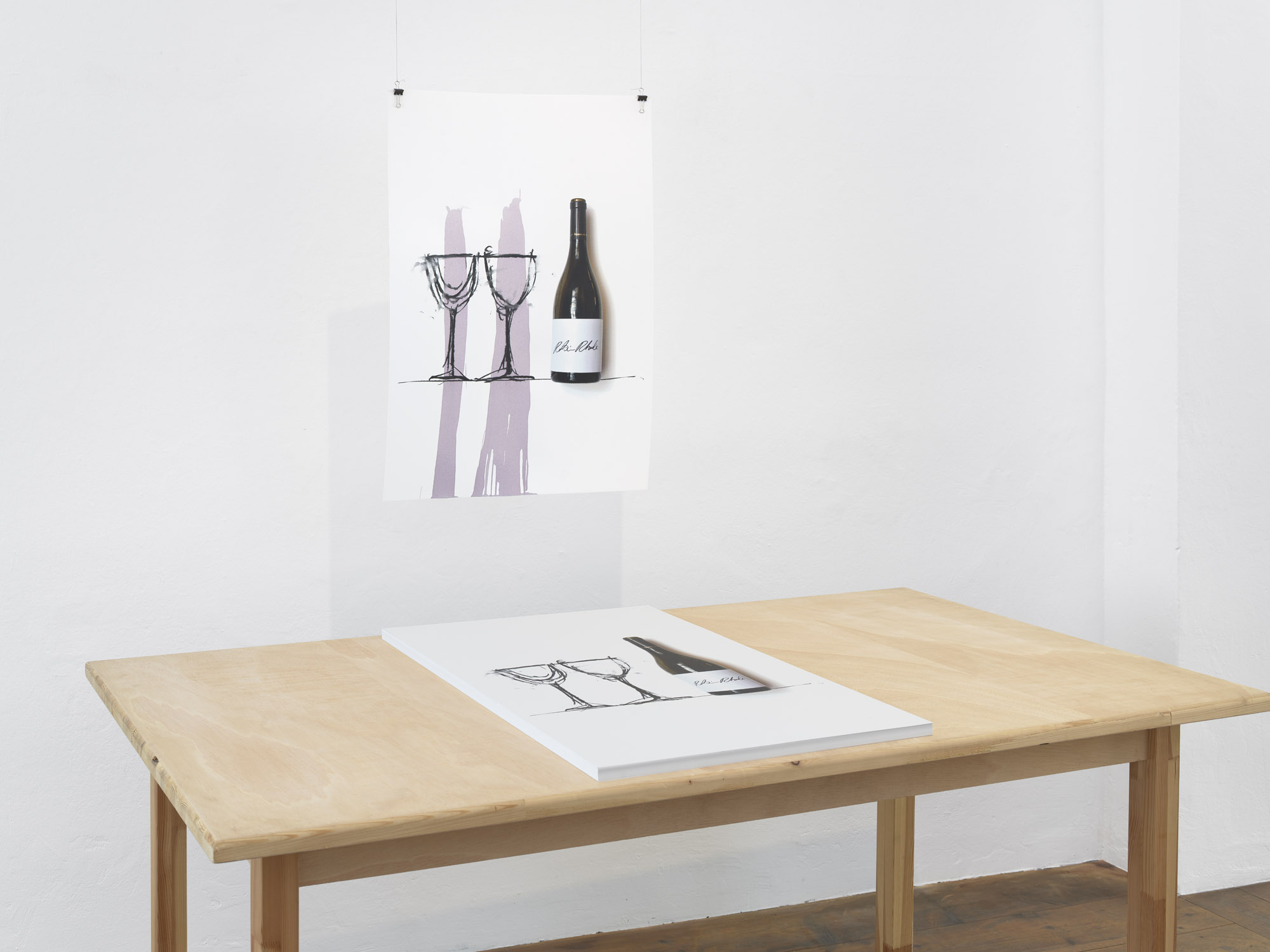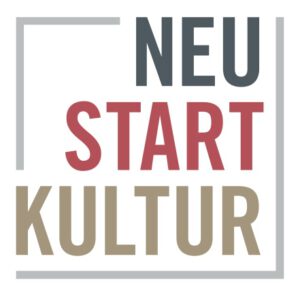


BEHIND THE SCREEN
June 17 to August 15, 2021
Potsdamer Str. 97, 10785 Berlin
With Mariana Castillo Deball, Cécile B. Evans, Anta Helena Recke and Robin Rhode
The exhibition is kindly supported by Stiftung Kunstfonds NEUSTART KULTUR
What is the relation between editions and performances? And how might performative art practices gain new access to replicable works of art? As a gallery, that produces and publishes editions for over 30 years, Klosterfelde Edition invited for its current exhibition BEHIND THE SCREEN the artists Mariana Castillo Deball, Cécile B. Evans, Anta Helena Recke and Robin Rhode to react to these questions. In the course of the exhibition, every edition is being extended by a performative element.
An edition not only evokes performative moments within itself, but rather provokes such. The kites by Mariana Castillo Deball (*1975) can be characterized as objects of utility, that take up direct contact with the viewers and, by doing so, turn into immaterial gestures. As in many of her works, these kites connect different contexts, and function as repositories of knowledge, identities and histories. Their shape on the one hand refers to Korean fighting kites, whereas the calendar in the depicted crocodile quotes the Codex Borgia. It’s one of the few pre-Columbian Mexican manuscripts, that wasn’t destroyed in the 16th century. Apart from three other copies, the Codex Borgia is still in the possession of the Vatikan and therefore underlines the long overdue confrontation with its restitution. The exhibited kites also hold another story. As a sign of solidarity against gender-based violence, kites appeared during the International Women’s Day demonstrations on March 8, 2021 in Mexico City. Even Mexican artist Francisco Toledo used 43 kites to commemorate the murdered and missing students of Guerrero. In solidarity with the Zapatistas, the kites will for the first time rise up to the sky in the coming weeks. As a counter-colonial action, the Zapatistas currently travel on a boat from Mexico to Europe. The artist will support this journey with a part of the edition’s proceeds. In 2013, Mariana Castillo Deball received the price of the national gallery for young art in Berlin. Her work has been shown at documenta (13) in Kassel, among others. Daball’s exhibition Amarantus is on view until August 8, at Museum für Gegenwartskunst Siegen.
In Breathing Loop (family portrait for A Future Adaption) by Cécile B. Evans (*1983), the edition turns into an animated moment itself. The exhibited work is related to the development of Evans’ video installation For a Future Adaption, about the struggles of a family to adapt the ballet Giselle. In it, a rubber plant – in the role of the director – and a camera, are themselves forced to adapt as the modern world collapses. In the edition, we see the arrival of a third element that unpredictably intertwines the different worlds at play: a baby. These narrative interconnections take their first steps in the making of this edition. As with classic cel animation, the depicted characters exist as three separate layers brought together into one scene. Over the course of the eight frames, slight alterations produce movements in the characters that signal a single breath being taken- the beginning of what is known in animation as a “breathing loop”. In their artistic practice, Evans focuses on the human condition and its emotions as they come into contact with ideological and technological structures. Their work has been shown at 9. Berlin Biennale 2016 and Haus der Kunst Munich, and is held in public collections such as MoMA in New York and the Whitney Museum, among others. Currently, Evans is working on a collaboration with the National Ballet of Marseille for the group exhibition Liquid Life at Kistefos Museum in Norway, a continuation of the ongoing adaptation which has been most recently shown at the Centre Pompidou in Paris.
As a director, dramatic adviser, conceptual artist and author, Anta Helena Recke (*1989) is interested in the marking and non-repetition of normativity in her mostly scenic pieces. As a result, the occurring spaces of experience challenge predominant environments, gazes or relations. Due to its consistent separation to the outside, the gallery space can be defined as such construction of normativity. Usually, the gaze is directed from the outside to the inside, whereas the access represents for many people a social barrier, or is not even considered as an option. Instead of turning the spaces of Klosterfelde Edition into an elitist stage of exchange, Recke reverses the perspective. Using fictitious bets, that refer to the visual axis from Klosterfelde Edition on Potsdamer Straße, the attention is being redirected onto the agents on the street, in the apartments or stores. Thereby the gallery embodies the fictitious counterpart to the betting office Bar Arena across the street. On July 24 at 4pm, the edition will turn into a ticket or entrance into a matrix, where the coincidence is the enactment and the enactment turns into the day-to-day-world. Anta Helena Recke was selected as young artist 2018 by the critic’s vote of Theater heute and she received the price of the International Theaterinstitut (ITI) 2019. Her next production „1000 Serpentinen Angst“, adapted from the Olivia Wenzel novel, is going to be on stage at Gorki Theater in Berlin.
„What remains“, could be the question of the silkscreen print by Robin Rhode (*1976). The manifestation of a gesture – the pouring into a wine glass – sprawls here through three medial layers. As in many of his socially critical works, Rhode starts with a charcoal draft, which is then being extended into the space by using props and live action. First, the photography of a wine bottle and the drawing of two glasses dominate the sheet. Only the wine stains on paper give us an idea of the last step of the performance – pouring wine into the drawn glasses. The gesture seems to sway between blatant spillage and extravagant casting. Questions, that address the traces of social gestures and their permanence in media, fictitious and real spaces become relevant. What remains, are the silkscreen of a drawing and wine bottle, as well as the traces of the wine on paper. Robin Rhodes art has been, among others, shown in Drawing Center New York, Hamburger Bahnhof in Berlin and Haus der Kunst in Munich. His current show in Museum Voorlinden in the Netherlands can be visited until September 26.
Text by Elisa Maria Schmitt
![]()

